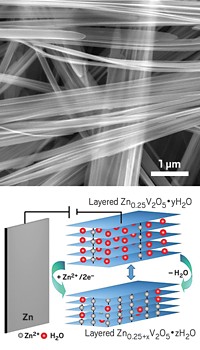Advertisement
Grab your lab coat. Let's get started
Welcome!
Welcome!
Create an account below to get 6 C&EN articles per month, receive newsletters and more - all free.
It seems this is your first time logging in online. Please enter the following information to continue.
As an ACS member you automatically get access to this site. All we need is few more details to create your reading experience.
Not you? Sign in with a different account.
Not you? Sign in with a different account.
ERROR 1
ERROR 1
ERROR 2
ERROR 2
ERROR 2
ERROR 2
ERROR 2
Password and Confirm password must match.
If you have an ACS member number, please enter it here so we can link this account to your membership. (optional)
ERROR 2
ACS values your privacy. By submitting your information, you are gaining access to C&EN and subscribing to our weekly newsletter. We use the information you provide to make your reading experience better, and we will never sell your data to third party members.
Energy
A New And Improved Flow Battery
Electrochemistry: Inexpensive large-scale batteries are designed to assist grid-scale solar and wind electricity storage
by Mitch Jacoby
September 28, 2015
| A version of this story appeared in
Volume 93, Issue 38
A study advancing the safety of flow-battery technology could further enable electricity generated by solar cells and wind farms to be used on a large scale when it is needed, as opposed to only when the sun shines and wind blows (Science 2015, DOI: 10.1126/science.aab3033). Flow batteries may be better suited than conventional batteries for storing and supplying electricity on a grid scale because the compounds undergoing electrochemical reactions are housed in storage tanks outside of the electrochemical cell. That separation enables flow-battery components to be optimized independently to suit the application. Last year, a Harvard University team including Michael J. Aziz and Roy G. Gordon reported on a low-cost, catalyst-free flow-battery design based on redox-active fused-ring quinones. That design avoided the corrosiveness and hydrogen evolution concerns associated with standard flow batteries, which use acidic solutions of metal ions. But the Harvard battery required a redox-active bromine-containing solution, a separate hazard. The same researchers now report they have designed and tested a flow battery that operates at 50% higher voltage in which bromine has been replaced with ferrocyanide, an inexpensive compound that, among other things, is used as a food additive.




Join the conversation
Contact the reporter
Submit a Letter to the Editor for publication
Engage with us on Twitter